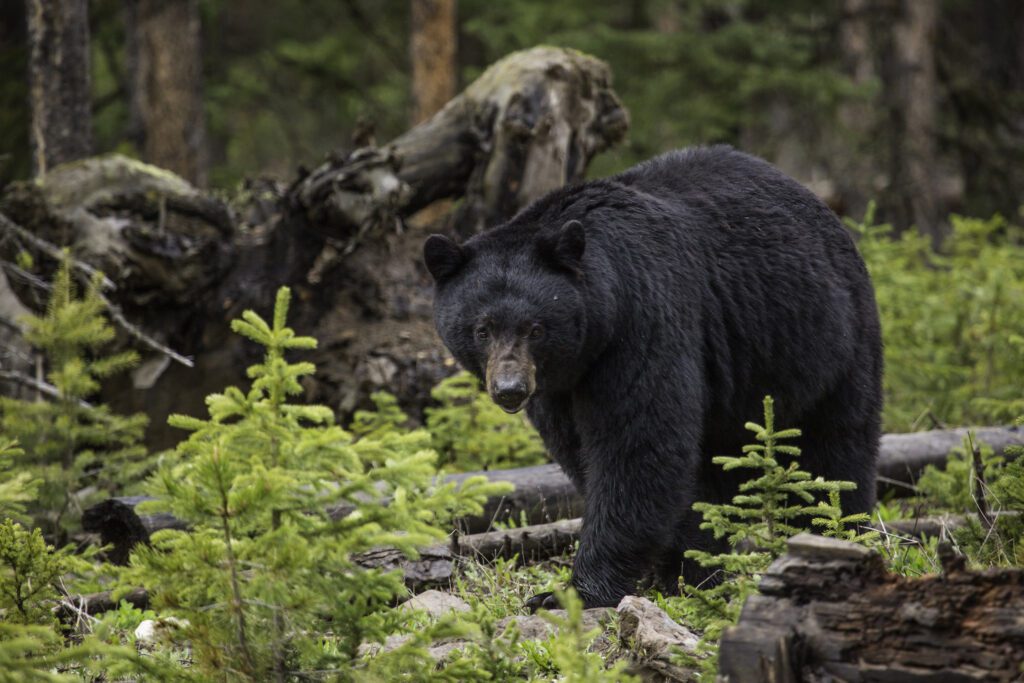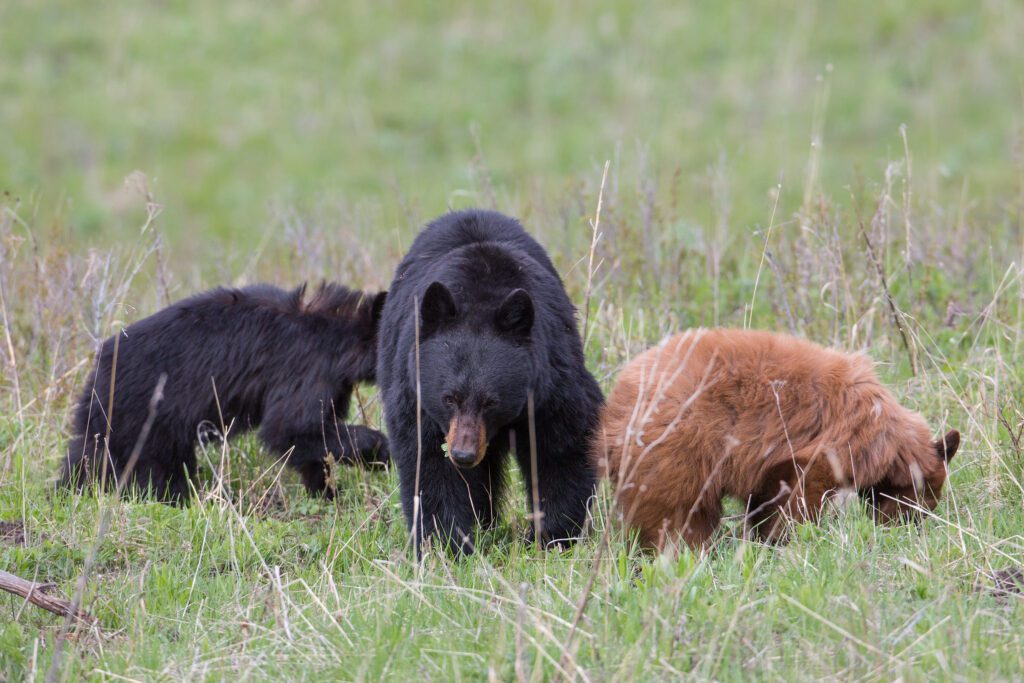Identifying Black Bears vs. Grizzly Bears
Both black and grizzly bears live in Yellowstone National Park, and if you’re lucky enough to see one on your visit it’s good to be able to tell them apart. Looks can be deceiving in the world of Yellowstone bears, so let’s dive into how to identify black and grizzly bears in this short guide.
Black Bears
There are approximately 500-650 black bears living in Yellowstone, far more than their larger cousins. Black bears are often mistaken for grizzlies though, for one simple reason: they’re not always black. In fact half the black bears in Yellowstone are blond, brown, or cinnamon in color. This discrepancy between the species’ name and it’s actual physical appearance leads to frequent misidentification in the park by excited visitors. Let’s go over some identifiers and characteristics that can help you avoid being fooled.

Grizzly bears, as we’ll explain below, have a prominent shoulder hump that rises above their rear or rump. Black bears, on the other hand, have shoulders that lay level with their backs and sit below their rumps. This is often the best identifier for differentiating the two.
Black bears have a straight facial profile between their eyes and their muzzle. Indention or concavity in this area of the face indicates you’re looking at a grizzly bear.
Black bears’ ears are taller, more prominent, and oval shaped than those of grizzlies.
A black bear’s tracks will indicate toes that are separated and arced across the paw. If you were to draw a straight line under the big toe and over the paw it would pass through the top half of or over the little toe. Claw marks don’t always appear in tracks, but if they do, a black bear’s claws are less than two inches long.
Black bear size can vary greatly, but in general they are smaller than grizzlies. Males can weigh between 210 and 315 pounds, while females fall between 135 to 200 pounds. A large male black bear could potentially be larger than a female grizzly though, so don’t rely on size alone.
Grizzly Bears
There are roughly 150 grizzly bears residing wholly or partially inside Yellowstone National Park. Though they’re less common than black bears, it’s still entirely possible to see a grizzly bear on your trip into Yellowstone. Let’s take a look at how to identify one if you should come across it.

Grizzly bears have a prominent shoulder hump which rises above their rump. This mass of muscle gives the grizzly additional power for digging up food and digging out dens. The shoulders of a grizzly will rise above its rump.
A grizzly bear’s face will appear concave or dished between the eyes and the snout, in contrast to a black bears straight facial profile.
A grizzly bear’s earth will appear shorter and rounder than those of a black bear.
Grizzly bear tracks will indicate toes that are close together and not arced across the paw. A line drawn across under the big toe and across the pad will cross through or under the little toe. Grizzly bear claws are 2-4 inches long and are often visible in their tracks.
Grizzly bears are on average larger than black bears. Males can weigh between 216 to 717 pounds, while female fall between 200 and 428 pounds.
Safety in Bear Country
Before you head out, a few quick notes on safety in bear country. Yellowstone is home to hundreds of black and grizzly bears, so it’s vital to follow these guidelines while in the park.
First, always carry bear spray and know how to use it. Bear spray is the most effective deterrent to an aggressive bear.

Second, store all food, trash, and other bear attractants appropriately. Never leave attractants out at camp while you’re away and always store attractants in a bear-proof box (often provided at campsites, your vehicle, or hung from a tree at least 100 yards from camp.
Third, always travel in groups of three or more in the back country. Groups of three or more are less likely to face aggression from a bear. In addition to this, make noise as you travel so as not to accidentally sneak up on an unsuspecting bear.
Lastly, when in Yellowstone, stay at least 100 yards away from bears. This guideline goes for wolves too.
Best of luck to you in the search for bears in Yellowstone. They’re an amazing sight, even more so when you know how to identify them. If you’re interested in a guided wildlife tour of Yellowstone, check out our Hayden and Lamar Valley Wildlife Tour where we seek out bears, wolves, bison, elk, moose, and more. Check out some of the other tours we offer below.

